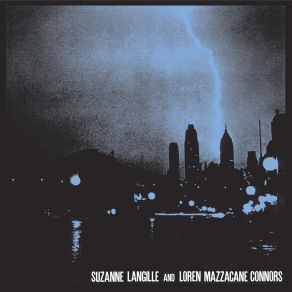1987-1989
Download links and information about 1987-1989 by Loren Mazzacane Connors, Suzanne Langille. This album was released in 2000 and it belongs to Electronica, Alternative genres. It contains 7 tracks with total duration of 42:53 minutes.

|
|
|---|---|
| Artist: | Loren Mazzacane Connors, Suzanne Langille |
| Release date: | 2000 |
| Genre: | Electronica, Alternative |
| Tracks: | 7 |
| Duration: | 42:53 |
| Buy it NOW at: | |
| Buy on iTunes $6.93 | |
Tracks
[Edit]| No. | Title | Length |
|---|---|---|
| 1. | Wee Wee Hours | 5:44 |
| 2. | Horses Blues | 4:57 |
| 3. | TB Blues | 8:14 |
| 4. | Kumbaya | 4:11 |
| 5. | Motherless Child | 6:41 |
| 6. | Haunted House | 6:19 |
| 7. | Amazing Grace | 6:47 |
Details
[Edit]This collection of blues, gospel, folk, and even rock standards (Chuck Berry's "In the Wee Hours") is actually a compilation of material from live gigs, a track from the In Pittsburgh album, and various other home-studio recordings and live gigs. They have several things in common: First, they are all from a period where Loren Mazzacane Connors returned to playing music after a four-year hiatus and discovered the electric guitar as the means for his expression — though he hadn't yet abandoned the acoustic entirely — and second, before he discovered his now-trademark multi-tracking system of performance. Third is that this disc is a complete collaboration between Suzanne Langille and Connors. Each musician has a trademark style and a way of slowing things to a near dead stop, and filling it with a maximum emotional tension. Take, for example, the pair's reading of Berry's tune: Langille turned the fire down so low that the simmer is barely visible. But each word, each syllable, is enunciated in such a sensual, smoky way that the tune becomes a potboiler. Connors covers her with a blanket of singled-out notes and sparse phrasing that would never have occurred to Berry in a million years. In other words, they make the tune a different song. In their reading of Jimmie Rodgers' "TB Blues," Connors takes his time winding the tune into a recognizable melody. He plays with it, stretching time and traditional blues harmony, and allowing other things to fall into the cracks. He drifts and drones his way through it until the point, four minutes in, when Langille enters. The relief on the part of the listener is enormous because, as slow as it is, the melody is recognizable and we know that this song comes from somewhere besides inner space. The finale, "Amazing Grace," was recorded in a loud, noisy coffeehouse. It is all the more poignant for its messy atmosphere. It makes sense that a lone voice and guitar would carry the old gospel message of salvation as commerce and let its attendant sonic garage take place all around it. It's a fine ending to a damn fine record. It's not only a great portrait of a major time of rediscovery for Connors and Langille, but it's a solid recording of them performing together — which some of us wish would happen more often.